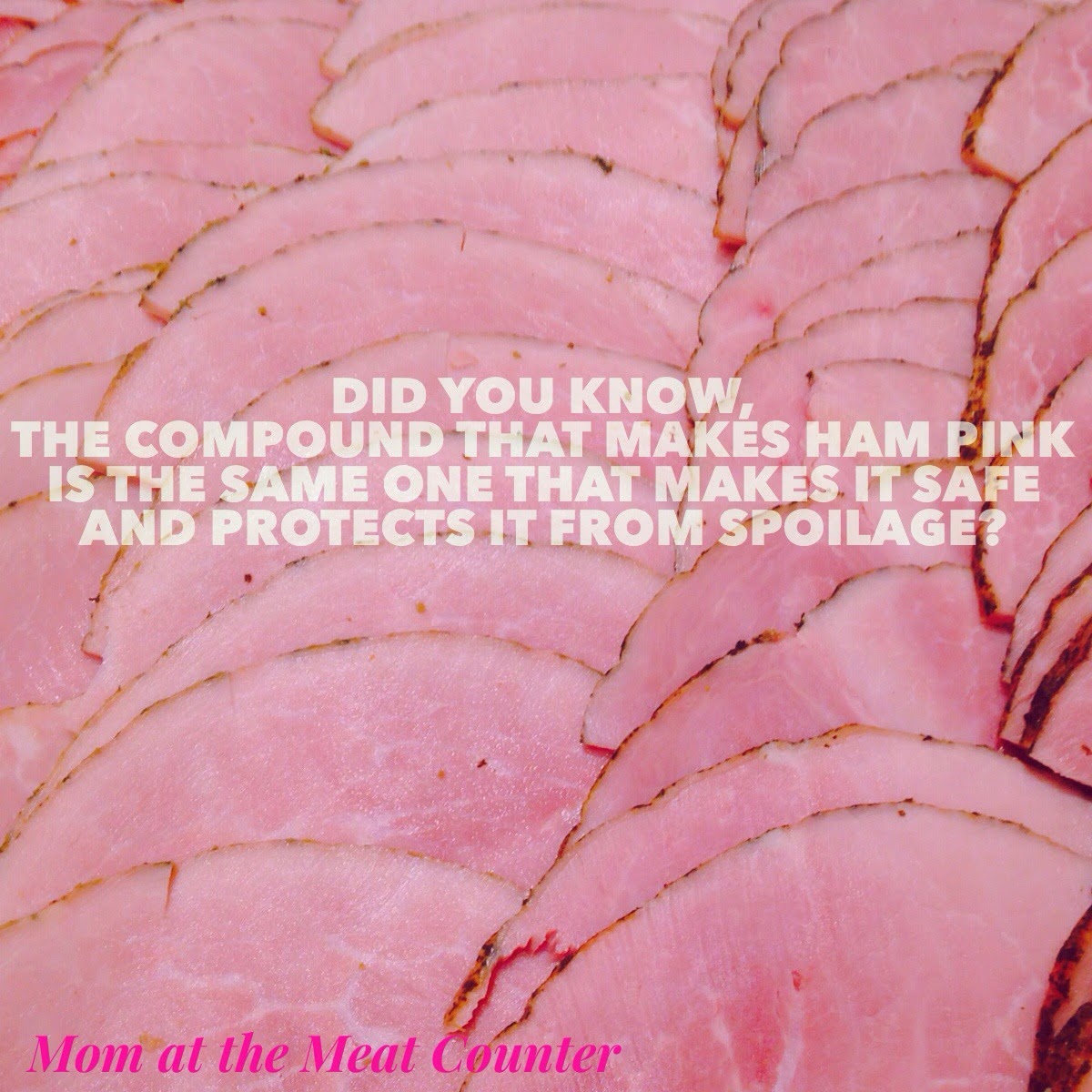This year I’ve been working on a series of posts about food
labels and what they mean. In earlier posts, I talked about what the Natural
label means on a meat package, but I get some questions about Uncured, Naturally
Cured or processed meat products that are made without nitrate or nitrite.

I’ve covered this topic before in a post called ‘What
is Nitrite?’, but I wanted to cover it again in the labeling series.
Some processors want
to create friendlier, less chemically labels and choose to remove nitrates. Also,
when meat processors want to use the Natural or Organic labels, they are not
allowed to add nitrites and nitrates as they are classified by the USDA as
chemical preservatives.
What if you just
removed these ingredients from natural products?
Just take it out. Problem solved.
 Some processors do that, but without nitrite, deli ham would
not be pink, it would basically be just a pork roast. Tasty meats like bacon
and hotdogs wouldn’t have the same flavors we enjoy. And, most importantly, all
of these products would be more susceptible to spoilage and the growth of
dangerous bacteria. The nitrite helps them last longer on store shelves and in
your refrigerator. Nitrite also makes them safer for you and your family.
Some processors do that, but without nitrite, deli ham would
not be pink, it would basically be just a pork roast. Tasty meats like bacon
and hotdogs wouldn’t have the same flavors we enjoy. And, most importantly, all
of these products would be more susceptible to spoilage and the growth of
dangerous bacteria. The nitrite helps them last longer on store shelves and in
your refrigerator. Nitrite also makes them safer for you and your family.
So, removing it
doesn’t work.
What is nitrite anyway
and what is its purpose in meat?
Nitrite is added to processed meats like ham, bacon, and
sausages (hotdogs, bologna, etc) for 4 reasons:
1.
It prevents the growth of Clostridium botulinum (the bacteria that
causes botulism). Botulism can shut down your nervous system and that’s not
healthy. It also helps control other dangerous pathogens and bacteria that
cause spoilage, so it helps keep meat
safe.
2.
It is a very powerful antioxidant and keeps the meat from going rancid. The
fat in processed meat can get funky flavors if allowed to oxidize, and nitrite
helps to keep that from happening. Ever notice why a package of ham can last
for weeks in your fridge while leftovers go bad in a few days?
3.
It gives cured meats their distinct pink color. The nitrite reacts with the muscle protein and
changes it to pink, and it stays pink for a much longer time than fresh meat
stays red.
4.
It gives cured meats their distinct flavor. That unique “hammy” and smoky flavor of a ham or that
unique bacon flavor in bacon comes from the nitrite.
 |
| German researchers discovered that nitrite and not nitrate (curing cousins) was the form of curing salt responsible for meat curing, and started to exclusively use nitrite for curing. |
Also, without nitrite,
several products would completely lose their identity. The USDA has standards
of identity that regulate what is a hot dog, bologna, or even bacon and nitrite
is an important ingredient for making them what they are. Without it, they are
no longer “cured.” This means bacon without nitrite would no longer be bacon,
but would instead be cooked pork belly.
How do “Natural” and
“Cured” coexist?
Even though, nitrate and nitrite are not allowed to be
directly added to natural and organic labeled meat products, other ‘natural’
ingredients with high levels of naturally-occurring nitrate can be used to replace
the synthetic forms.
Many vegetables contain high levels of naturally
accumulating nitrate. In fact, the main
human dietary source of nitrate isn’t processed meats, but actually green
leafy vegetables like spinach and celery. When the nitrate is converted to
nitrite, presto… meat curing can naturally happen.
Meat processors can use vegetable powder in processed meats as a source of nitrite to create the pink color and cured flavor. On the label, it may be listed as celery powder, flavoring, or natural flavoring. The nitrite derived from vegetables and found in vegetable powder and in natural meats is exactly the same compound as that found in conventionally cured meats.
However, this substitution doesn’t replace all the nitrite needed to provide important quality and safety attributes. The final nitrite levels are lower and the vegetable powder may have to be limited because it can give the meat product its own flavors, too. These lower nitrate levels mean that the naturally cured meats are not as well protected from spoilage and pathogenic bacteria like Clostridium botulinum and Listeria monocytogenes. So, other steps must be taken to help keep the product safe. Meat processors add natural antimicrobial ingredients or use extra processes like high pressure processing to protect against spoilage and dangerous bacteria.
So what’s the difference, really?
.jpg) Generally, natural meats are going to be more expensive
because the ingredients that go into them are more expensive. However, when
your dinner hits the table, natural and conventionally-cured meats should taste
the same and both are safe and nutritious for your family.
Generally, natural meats are going to be more expensive
because the ingredients that go into them are more expensive. However, when
your dinner hits the table, natural and conventionally-cured meats should taste
the same and both are safe and nutritious for your family.
For this post, I want to thank Dr. Jeff Sindelar from the
University of Wisconsin for helping me explain all the nitrate/nitrite
chemistry. Jeff and I have been buddies since graduate school, and he is a
great meat scientist who has devoted his research to naturally-cured meats. You
can see him talking about it in his Meat
Myth Crusher video.
